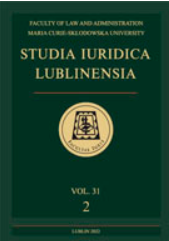Product’s Shape Distinctiveness as a Condition for the Registration of a Three-Dimensional European Union Trademark: Partially Approving Commentary on the Judgment of the General Court of the European Union of 14 July 2021 in Case T-488/20 Guerlain..
Product’s Shape Distinctiveness as a Condition for the Registration of a Three-Dimensional European Union Trademark: Partially Approving Commentary on the Judgment of the General Court of the European Union of 14 July 2021 in Case T-488/20 Guerlain..
Author(s): Marek SalamonowiczSubject(s): EU-Legislation, Commercial Law, Court case
Published by: Wydawnictwo Naukowe Uniwersytetu Marii Curie-Sklodowskiej
Keywords: three-dimensional mark; inherent distinctiveness; aesthetic functionality; unusual variant of the product’s shape;
Summary/Abstract: The study is a partially approving commentary on the judgment of the General Court of the European Union in case T-488/20 Guerlain v European Union Intellectual Property Office (EUIPO). The issue in the case was the assessment of the distinctiveness of a sign applied for, comprising a lipstick in the shape of a boat hull. In the light of its findings, the Court of the European Union referred to recognised criteria for assessment, such as, i.a., a significant deviation of the design from the accepted norms and customs in the given industry sector, including the aesthetic value and originality of the design, as well as the reference of the applied shape to the relevant public. However, the case lacked evidence of secondary distinctiveness, as well as an analysis of the aspect related to the aesthetic functionality of the product and protection of market competition. The General Court came to the debatable conclusion that the shape in question is atypical for lipsticks and differs significantly from all other shapes on the market and consequently has a feature of inherent distinctiveness. This has resulted in a certain liberalisation of standards in obtaining protection for three-dimensional trademarks without word elements. In sectors where design is diverse, a new and unusual variant of the product’s shape or its packaging may, in light of the commented judgment, be protected as an EU trademark. This will probably encourage entrepreneurs to file applications for such signs. For the doctrine of law, the judgment is an interesting source of inspiration for the discourse on the systemic role of legal protection of trademarks and industrial designs.
Journal: Studia Iuridica Lublinensia
- Issue Year: 31/2022
- Issue No: 2
- Page Range: 287-298
- Page Count: 12
- Language: English

